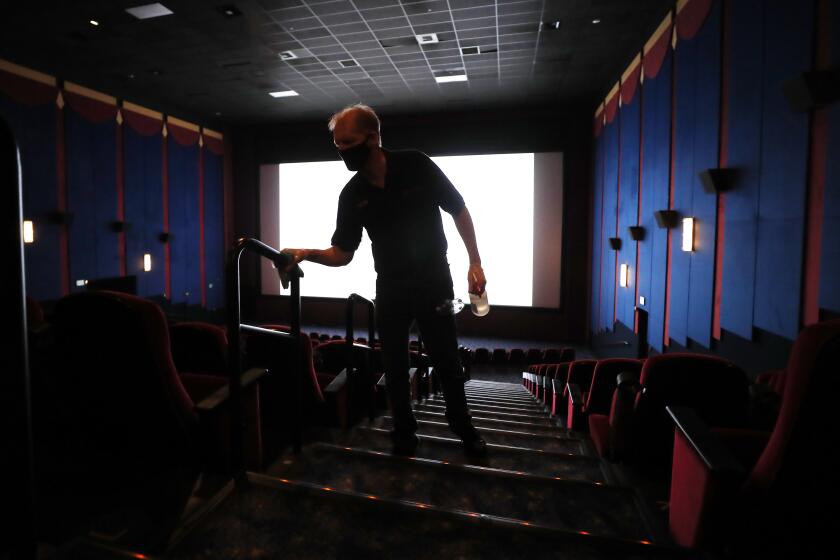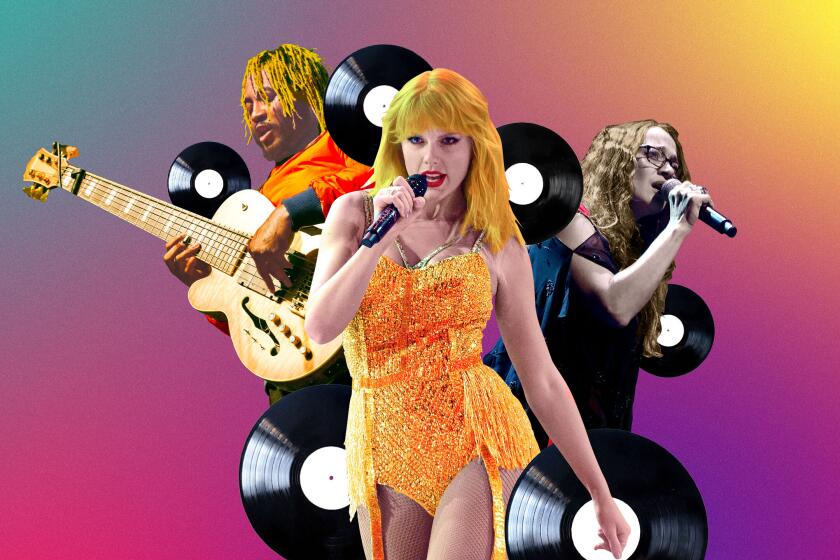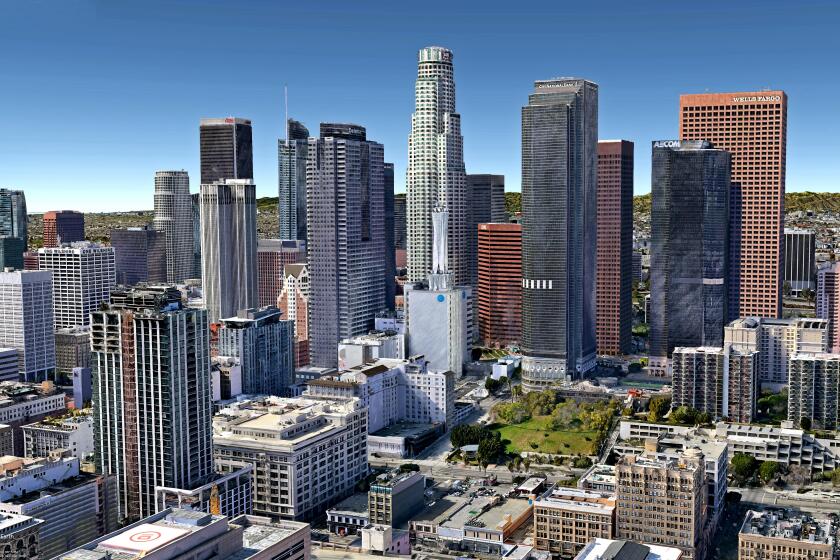
Remember when “Wonder Woman” star Gal Gadot made a video with a digital cavalcade of celebrities singing John Lennon’s “Imagine” and the internet lost its mind?
If the memory is a little fuzzy, that’s understandable.
Since that infamous day in March, Hollywood has repeatedly found ways to leave audiences slack-jawed during the COVID-19 pandemic. Even before that viral mishap, it was Tom Hanks and Rita Wilson who helped make the novel coronavirus suddenly feel real with social media posts from Australia announcing they’d tested positive.
COVID-19 has had a severe impact on everything from theaters and production to agencies and cable news. Some parts of the business may never be the same.
Just as often, it was Hollywood — and the greater community of creative industries that call Los Angeles home — that was left reeling.
The economic shock waves of the public health crisis rocked the film and television industry, shuttering far more than the starry catered movie premieres that, under normal circumstances, occasionally block off Hollywood Boulevard in front of TCL Chinese Theatre. Film and TV sets shut down, leaving thousands of people out of work, including hairdressers, set designers and camera operators.
The Year in Review
Studios and unions figured out safety protocols to get back in business, with production companies blowing through millions of dollars to sequester and test crew members in their production bubbles.
And still, the Batman himself, Robert Pattinson, tested positive for the novel coronavirus in September, pausing his big DC superhero production in the U.K.
Film and television studios, talent agencies and live-event companies enacted cost-cutting measures, including layoffs, furloughs and pay cuts. One report estimated California lost 284,000 jobs in fashion, entertainment, digital media and arts institutions.
The devastation hammered institutions old and new.
Movie theaters, which employ about 150,000 in the U.S., shut down and have struggled to stay afloat, even as many reopened to play Christopher Nolan’s “Tenet” and other films that braved the uncertain terrain. The world’s largest exhibitor, AMC Entertainment, has repeatedly gone to the financial markets for more capital to stay afloat.
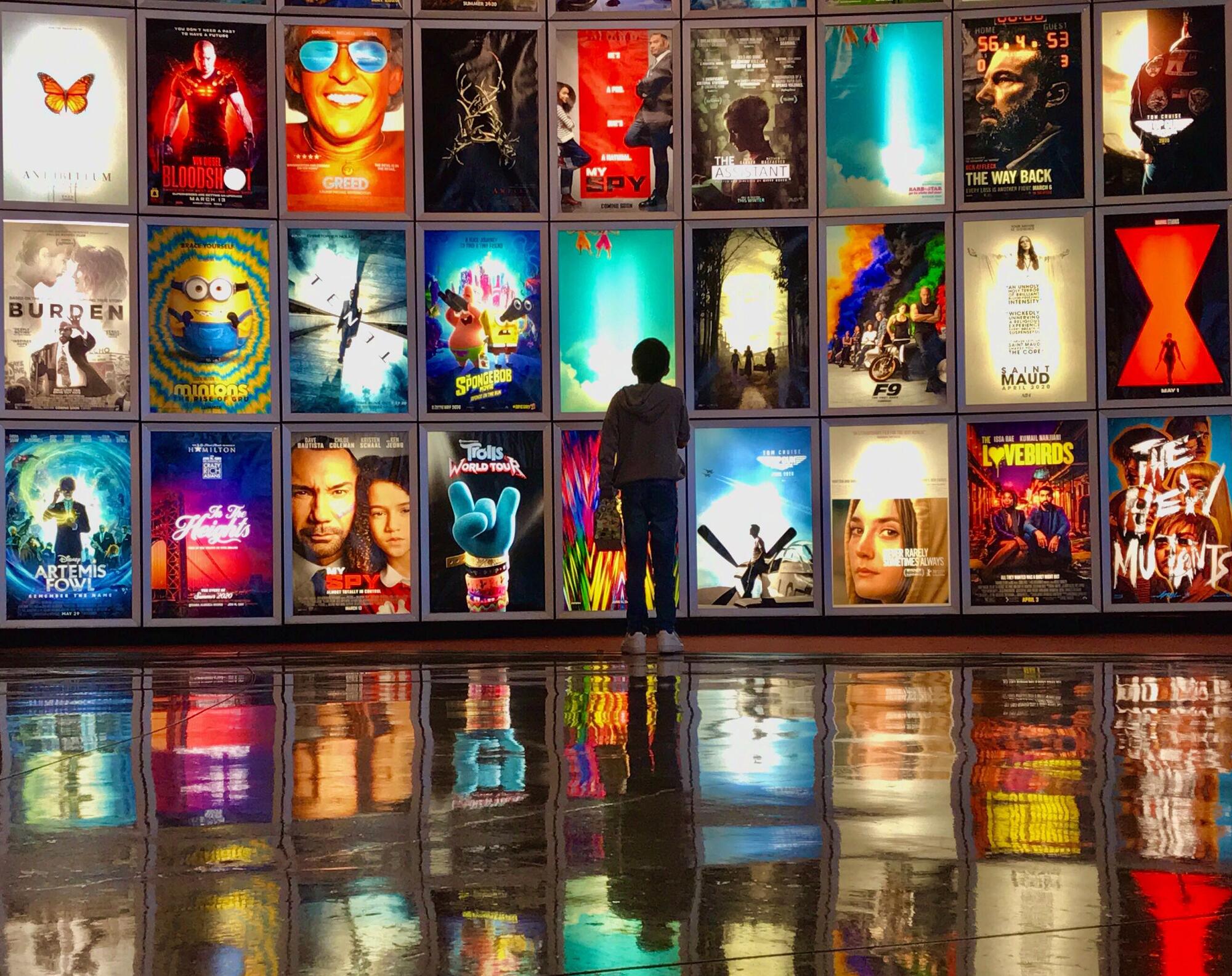
On the opposite end of the entertainment universe, streaming service Quibi launched with $1.75 billion in funding for short-form videos starring the likes of Chrissy Teigen and Liam Hemsworth. It announced it was closing barely six months after its debut. The app maker’s leaders — Jeffrey Katzenberg and Meg Whitman — laid some of the blame on the pandemic. Others said it was just a bad idea, poorly executed.
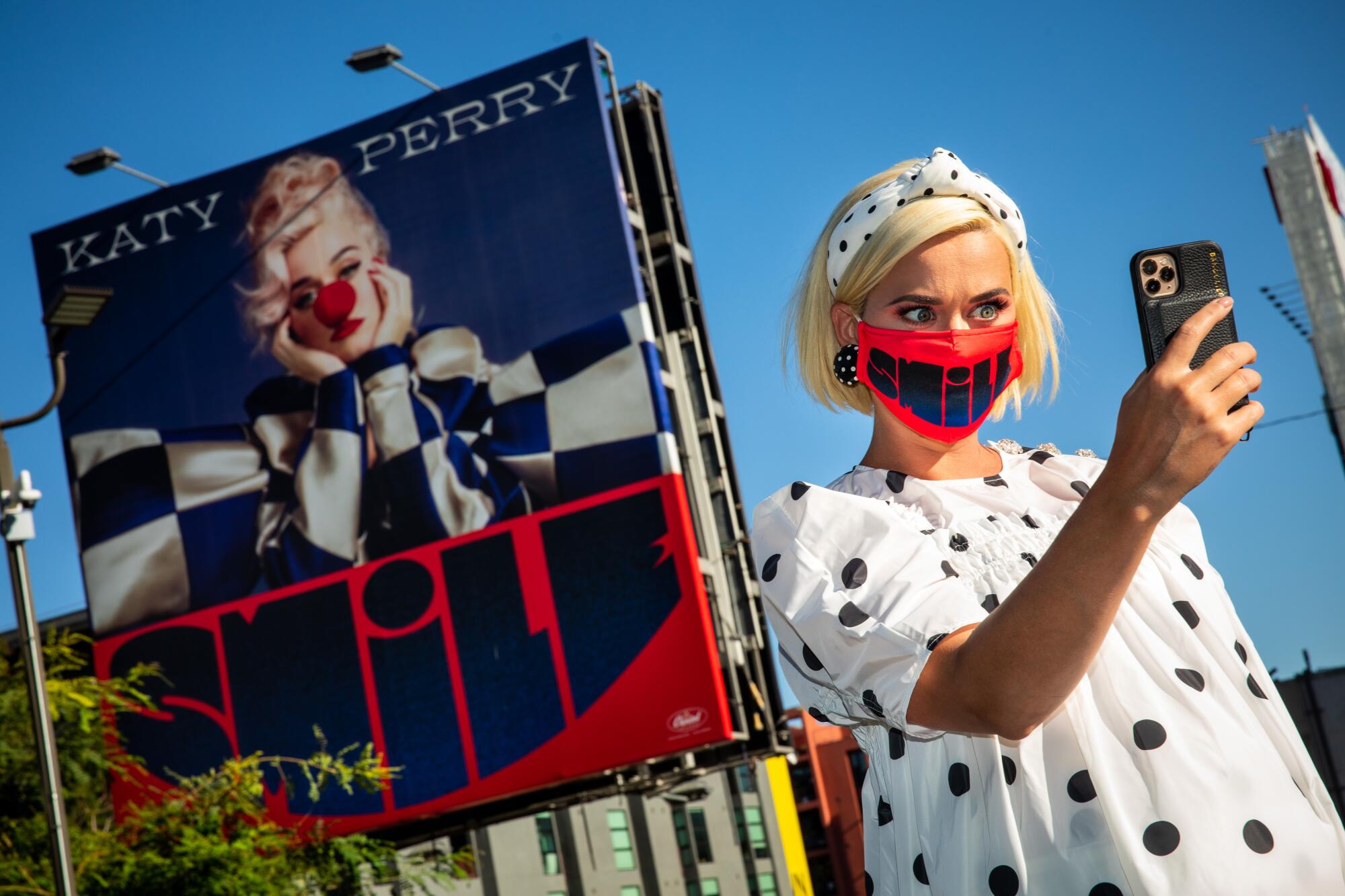
Beyond the economic damage, there was the deep cultural loss, especially in a region like ours. In Los Angeles County, we couldn’t go to an indoor movie, having to settle for pop-up drive-ins and backyard screenings. We couldn’t seek refuge inside LACMA or the Broad. Some indoor museums began to reopen in June, only to close again shortly after. Live theater? See you next year — we hope.
We couldn’t see a fresh music act at the Echoplex or the Troubadour or take in a show and a picnic at the Hollywood Bowl. Music fans made do with livestreamed shows and drive-in performances. Just this month, they spent the night live-tweeting Taylor Swift’s new album, “Evermore,” the second one the singer-songwriter released this year. Fiona Apple released one of the best-reviewed albums of the year, gracing listeners with dog barks and other idiosyncratic sounds that felt fitting for quarantine.
Five women take the top 3 spots, with Taylor Swift’s quarantine album leading our year’s best.
With theaters and other sources of in-person entertainment closed, audiences watched a lot of shows on streaming services. They posted Baby Yoda memes, debated “The Great British Baking Show’s” latest season on Netflix and argued online about Kristen Stewart’s fate in Hulu’s “Happiest Season.”
To understand how the entertainment business was buffeted in 2020, look no further than Walt Disney Co.
The company was forced to close its Disneyland Resort in Anaheim, laid off thousands and didn’t release a Marvel Studios movie all year. And yet the Burbank company’s stock price soared to record levels Dec. 11, after the studio previewed a Death Star’s worth of shows it plans to bring to Disney+. Executives said they expect Disney+ to reach as many as 260 million global subscribers in 2024. (Netflix currently boasts 195 million.)
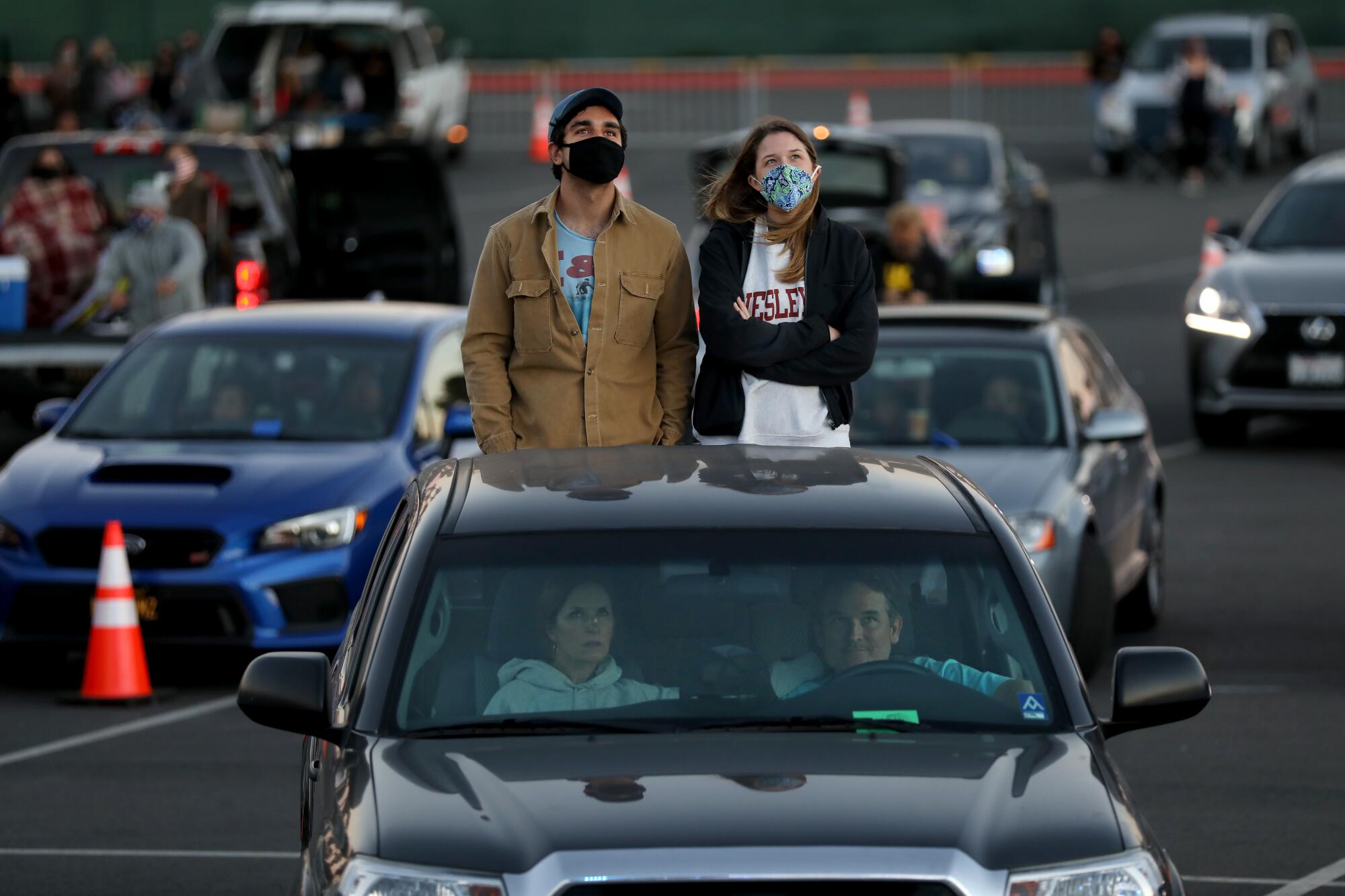
Disney declared its ambitious streaming goals merely one week after Warner Bros. stunned the creative community and theaters with its plan to release its entire 2021 movie slate — films including “Dune,” a fourth “Matrix” and Lin-Manuel Miranda’s “In the Heights” — simultaneously on HBO Max and in theaters (Warner Bros. and HBO Max are both owned by telecommunications giant AT&T).
While that’s a lot of disruption in a short amount of time, it shows the industry is adapting. Many of these changes were expected to happen anyway — just much more gradually. If you miss a film during its theatrical run, why should you have to wait three months to see it at home?

Studios have long wanted to shorten the wait time, usually 90 days, to something like 45, but few people would’ve predicted the “theatrical window” would collapse so quickly to 17 days (in the case of Universal Pictures), much less zero.
Warner Bros.’ bold experiment begins Christmas Day with the release of Patty Jenkins’ ”Wonder Woman 1984,” coincidentally the same day Pixar’s “Soul” premieres on Disney+. Welcome back to the spotlight, Gadot.
More to Read
Inside the business of entertainment
The Wide Shot brings you news, analysis and insights on everything from streaming wars to production — and what it all means for the future.
You may occasionally receive promotional content from the Los Angeles Times.
